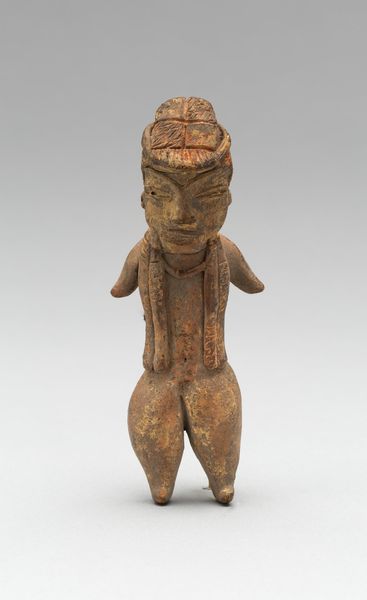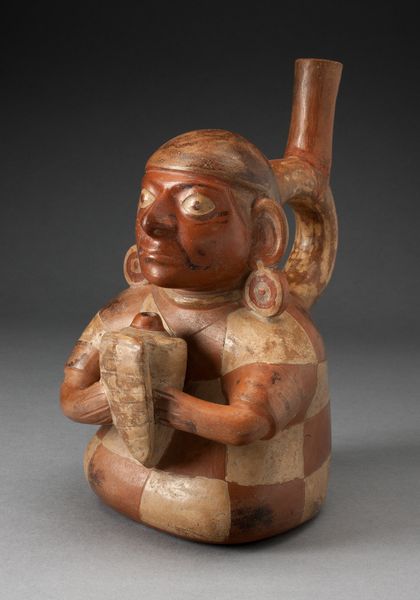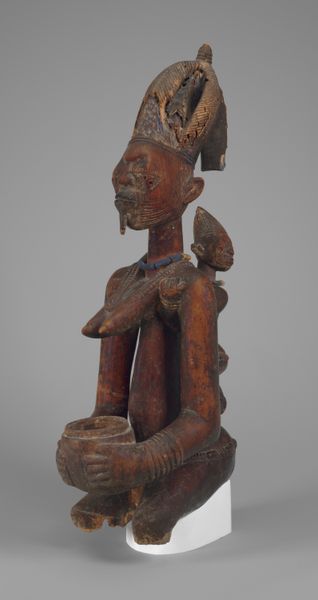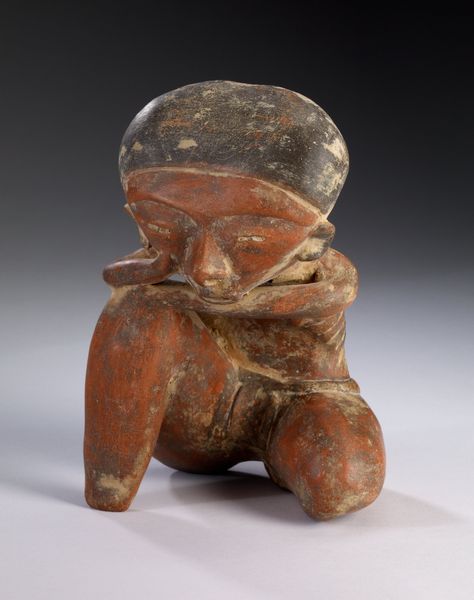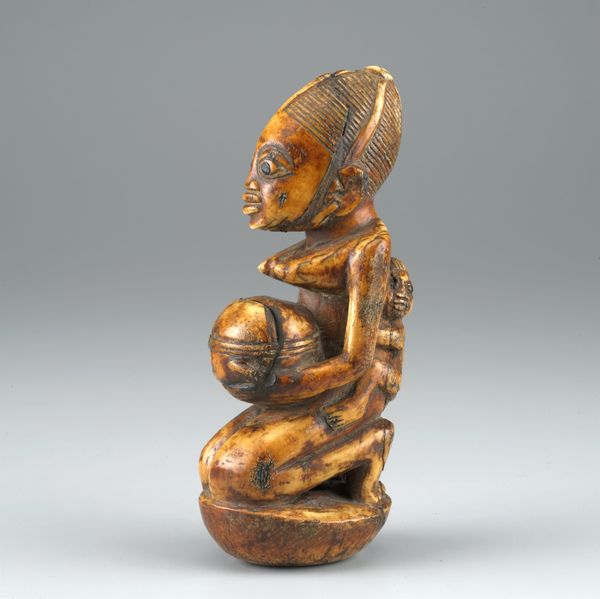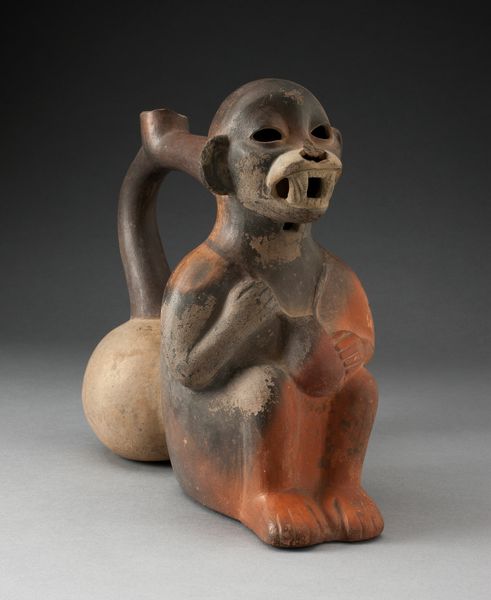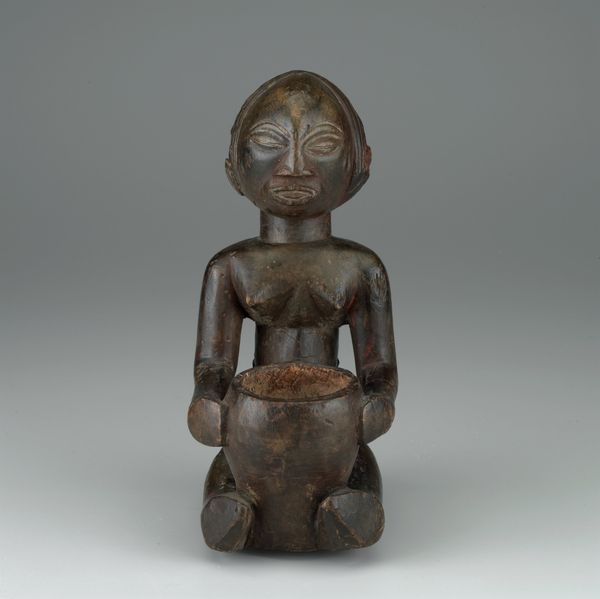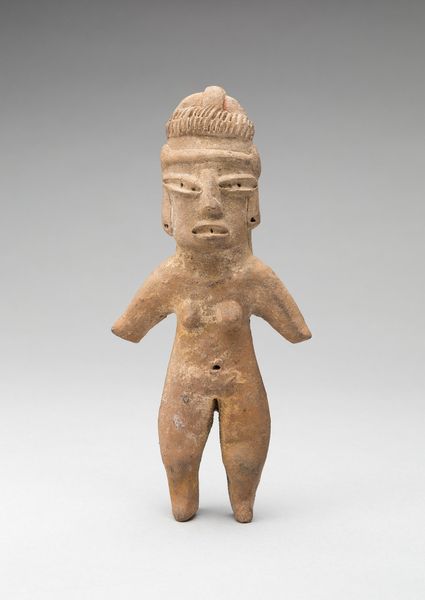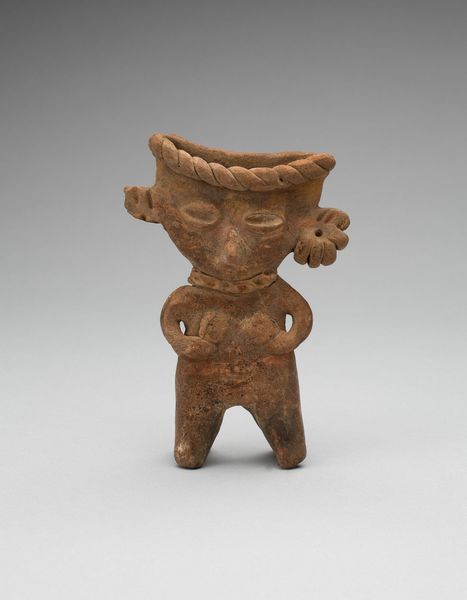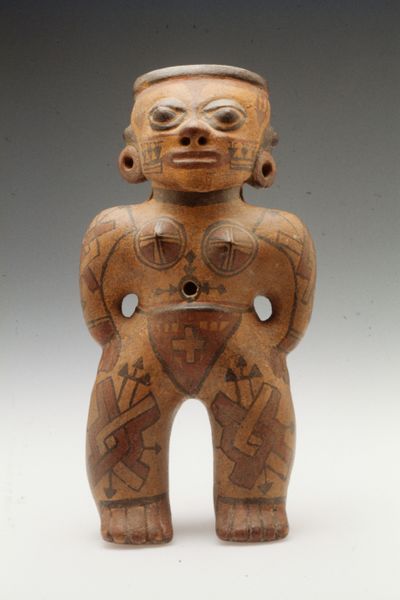
ceramic, sculpture, terracotta
#
ceramic
#
figuration
#
sculpture
#
terracotta
#
indigenous-americas
Dimensions: 34.3 × 25.4 × 20 cm (13 1/2 × 10 × 7 7/8 in.)
Copyright: Public Domain
Editor: This terracotta sculpture, "Seated Hunchbacked Dwarf," dates from around 300-400, and was created by the Colima people. The figure strikes me as oddly powerful despite his physical limitations, almost like a warrior in repose. What do you see in this piece, particularly in how the figure is represented? Curator: The power you sense is key. Consider how often disability has been either erased or stigmatized in visual culture. This Colima sculpture disrupts that. The hunched back and the seated posture are presented not as weakness but as integral aspects of this individual's identity, and perhaps even his spiritual potency. Do you notice anything particular about the facial expression or body language? Editor: He seems very alert, with his mouth slightly open as if he’s speaking or listening intently. His muscular arms and focused gaze convey strength, defying typical stereotypes of someone with a hunched back. Is that intentional subversion? Curator: "Subversion" might be too strong a word, but it certainly challenges preconceived notions. Pre-Columbian art often incorporated individuals with physical differences not as pitiable figures, but as respected members of society, sometimes even believed to possess unique spiritual insights. Look at the ceramic medium itself. Why ceramic, and why rendered so realistically? Editor: Perhaps the choice of clay emphasized the figure's connection to the earth, suggesting grounding and resilience. The lifelike representation would create an empathetic relationship between the viewer and the subject, wouldn’t it? Curator: Precisely. The Colima artists weren't simply depicting a physical form, they were encapsulating the enduring spirit and humanity within that form, reminding us of the value and strength present in every individual, regardless of physical appearance. It invites contemplation on what constitutes “normal” and challenges our preconceived notions about ability and representation. Editor: I see him differently now, not just a figure but a powerful symbol of acceptance and resilience, embodied in clay. Curator: And a cultural touchstone connecting us to an ancient civilization's values.
Comments
No comments
Be the first to comment and join the conversation on the ultimate creative platform.
